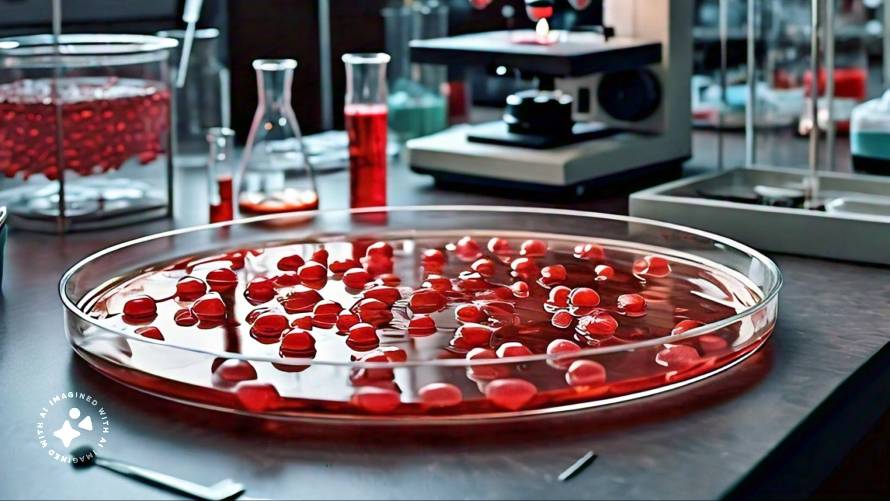Researchers have made a groundbreaking discovery by developing synthetic platelets that can effectively stop bleeding and promote healing at the site of an injury. While the synthetic platelets have shown promising results in animal studies, they have not yet been tested in human clinical trials.
The Need for Platelet Transfusions
Platelet transfusions are often necessary in various medical situations, such as severe bleeding, surgery, or chemotherapy. Currently, patients in these situations receive platelets from blood donors with compatible blood types. However, this approach has limitations due to the scarce supply of platelets, their short shelf life, and the need for controlled storage conditions.
Synthetic Platelets: A Game-Changer
Ashley Brown, the lead author of the study and an associate professor in the joint biomedical engineering program at North Carolina State University and the University of North Carolina at Chapel Hill, explains, “We’ve developed synthetic platelets that can be used with patients of any blood type and are engineered to go directly to the site of injury and promote healing.” These synthetic platelets are easy to store and transport, making it possible to administer them to patients in emergency situations, such as in an ambulance or on the battlefield.
How Synthetic Platelets Work
The synthetic platelets are made of hydrogel nanoparticles that resemble human platelets in size, shape, and mechanical properties. Hydrogels are water-based gels composed of water and a small proportion of polymer molecules. The surface of the synthetic platelets is engineered to incorporate antibody fragments that bind to a protein called fibrin, which the body synthesizes at the site of a wound to form a mesh-like substance that promotes clotting.
“Because the synthetic platelets are coated with these antibody fragments, the synthetic platelets travel freely through the blood stream until they reach the wound site,” Brown explains. “Once there, the antibody fragments bind to the fibrin, and the synthetic platelets expedite the clotting process.” The synthetic platelets also contract the clot over time, just like normal platelets, which accelerates the healing process and allows the body to move forward with tissue repair and recovery.
Promising Results in Animal Studies
The researchers demonstrated the effectiveness of the antibody fragments through in vitro testing and showed that the antibody fragments and synthetic platelets could be produced at scales suitable for large-scale manufacturing. They then used mouse and pig models to determine the optimal dose of synthetic platelets needed to stop bleeding and found that the synthetic platelets traveled to the wound site, expedited clotting, did not cause any clotting problems outside the wound area, and accelerated healing.
“In the mouse and pig models, healing rates were comparable in animals that received platelet transfusions and synthetic platelet transfusions,” Brown notes. “And both groups fared better than animals that did not receive either transfusion. We also found that the animals in both mouse and pig models were able to safely clear the synthetic platelets over time through normal kidney function. We didn’t see any adverse health effects associated with the use of the synthetic platelets.”
The Future of Synthetic Platelets
The researchers are currently completing preclinical efficacy testing and securing funding for preclinical safety work to obtain FDA approval for human clinical trials within the next two years. If approved for clinical use, the cost of synthetic platelets is expected to be comparable to the current cost of platelets.
The development of synthetic platelets marks a significant advancement in the field of medicine, with the potential to revolutionize the treatment of bleeding and wound healing. As research progresses and clinical trials begin, synthetic platelets may become a game-changer in emergency medicine, surgery, and chemotherapy, providing a readily available and effective solution for patients in need of platelet transfusions.


